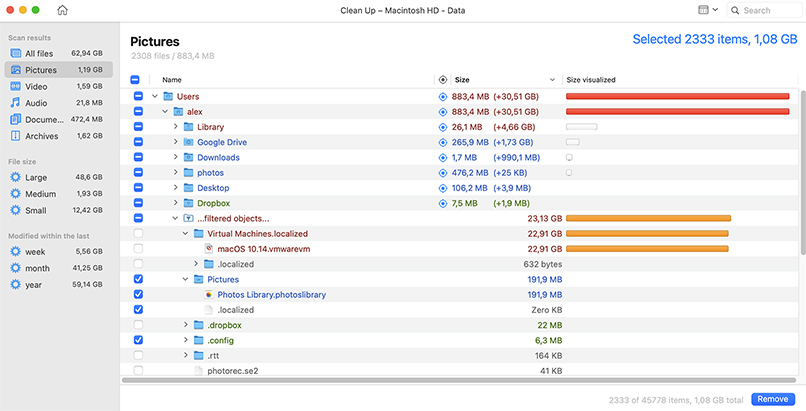

Click the Applications dropdown, and select your hard drive.Click the dropdown beside Dropbox location.Open your Dropbox desktop preferences on your desktop.MacOS: Manually move the Dropbox folder back to its default location Sign out and back in to the Dropbox desktop app to ensure that all of your preferences are moved as well.You will be asked to confirm if you wish to move your Dropbox folder location.In the text box next to Folder:, type “$Home”.Under Dropbox Folder Location, click Move.Close any applications on your computer that may be using your Dropbox files and folders.
MAC HARD DRIVE SPACE MAP HOW TO
Windows: Manually move the Dropbox folder back to its default location How to Show Hard Drive Icon on Mac Desktop It is the Finders job for displaying the desktop and its icons, which include storage devices icon too. (Windows and Linux), or Dropbox location (Mac). If Dropbox loses track of your folder, it will attempt to re-sync the folder in its entirety using its last known location. You need some disk space (hard drive space) to move the Dropbox folder. Next, select the ' General ' tab when the Finder preferences window appears on your Mac screen. Next, click on the ' Preferences ' option. Dropbox will not sync your folder if it has been manually renamed or moved through your operating system. Once you are able to do it, follow the below steps to show the hard drive on a Mac desktop: Go to the Menu bar, and then, move to ' Finder '. Your Dropbox folder will keep the same name as before, and can't be renamed during the move process. Select the correct tab before moving the Dropbox folder location.

If you’ve linked your Dropbox accounts, you'll see both of your Dropbox accounts listed.
MAC HARD DRIVE SPACE MAP FREE
If you’re running low, learn how you can free up disk space. You need some disk space (hard drive space) to move the Dropbox folder.If Dropbox doesn’t support the extended attributes (additional metadata) attached to your files, they’re not stored in Dropbox, so they won’t move with your Dropbox folder.Dropbox doesn’t support certain types of files and metadata like symlinks, aliases, shortcuts, junction points, resource forks, and networked folders.Not using Dropbox yet? See how Dropbox helps you effortlessly share folders. Replace them with high-quality iTunes versions, too.This article explains how you can move the Dropbox folder to a different location on your computer with your Dropbox preferences. And you can even delete all your matched music from iTunes and it still shows as available with an iCloud icon next to the track! (This is how you can drop tracks you ripped from CDs you own and Drag the network drive icon into the Users & Groups window. Select Login Items and uncheck the lock icon in the bottom left. Open System Preferences (the silver and black icon with the gear in the middle, somewhere around the center of the dock) and select Users & Groups.
MAC HARD DRIVE SPACE MAP DOWNLOAD
It lets you stream or download iTunes Match songs as you wish, reducing the storage requirements on any given Mac. Here’s how to do it: Perform the above steps to map the network drive. However, iTunes Match doesn’t sync music by default to every copy of iTunes in OS X that’s logged into the same iCloud account. ITunes with iTunes Match enabled shows both locally stored music and that available via the cloud for streaming or download. The “truth”-the definitive version-of your library is in iCloud: All the songs managed under iTunes Match and the full-resolution versions of all synced photos are found there. This gets confusing with iCloud, prompting Bruce’s question because Apple employs caching and downloads with iTunes Match (which relies on iCloud) and iCloud Photo Library.

I can put an Amazon S3 volume or an FTP server share on my desktop, and all the file interaction happens seamlessly (with whatever broadband lag slowing it down) between Transmit and the remote server. You can still access this sort of feature through fileserver access programs like I recall using various services to mount remote volumes in the Finder, including mounting iDisk with the old MobileMe service. The latter kind of cloud-based/local-cached access was oddly more typical when we had less bandwidth-it required less data transfer overall.


 0 kommentar(er)
0 kommentar(er)
